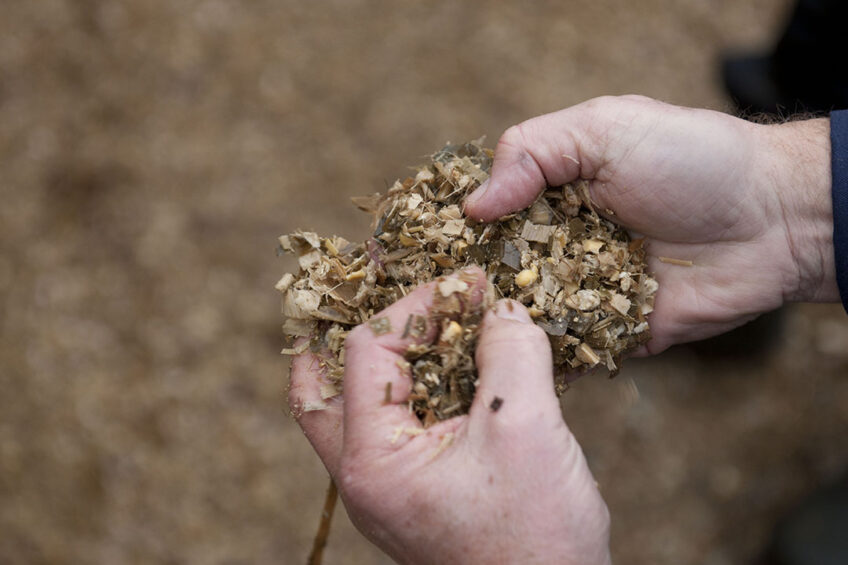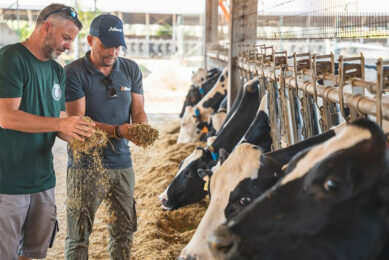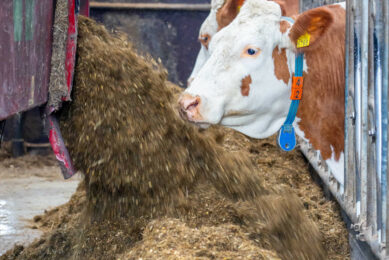How to mitigate feed safety risks in ruminant diets

While ruminants are well-designed to leverage the feed-to-food upcycling trend, production efficiency can never come at the expense of safety.
Ruminants are highly efficient animals which can digest fibrous feed and by-products unusable for human food. A Future Market Insights report projects that the upcycles food industry will grow at a 5% compounded rate. Production efficiency, however, can never come at the expense of safety.

When it comes to assuring sustainable food production across the supply chain, food safety will always be the common denominator and universal driver. Ruminant feed production is undergoing a shift that addresses the challenges of ruminants’ diverse diets and includes several preventive measures to avoid possible hazards and optimise food safety.
Ruminant diets are made up of a variety of feedstuffs and by-products, as well as dried or ensiled forages (usually 50–75% of the diet). Microbiology presents safety concerns as bacteria, yeasts and moulds of different origins can occur naturally in feed ingredients. As on-farm storage of feedstuffs presents additional concerns, applying phytosanitary practices helps minimise the risk of micro-organisms and mycotoxins contaminating feed. Below, we look at primary safety concerns that can arise when feed is contaminated with micro-organisms during processing and storage and how an integrated approach can help farmers mitigate the risk.
 The hidden risks of maize silage
The hidden risks of maize silage
New research shows dairy cows’ vulnerability to established and emerging mycotoxins and sheds light on their prevalence in feed.
Yeast problems
Yeast problems can occur in co-products and silages used for ruminant feeding in total mixed ration (TMR). Ensilaging is done to preserve crops with high moisture content. The limited air contact should stimulate lactic acid bacteria development, creating a natural preservation and preventing yeast development in the silage. However, many factors such as weather conditions, quality of raw materials and microbial pressure can disturb this process, impairing lactic acid production and allowing yeast fermentation. Neither aerobic nor anaerobic yeast (facultative anaerobe) are favourable in silage, since they consume valuable nutrients. When silage is under anaerobic conditions, fermentation of yeast from sugars to CO2 occurs, producing ethanol. The effects of ethanol production not only impair lactic acid fermentation but also negatively affect milk flavour. When silage is under aerobic conditions, the activity of different yeast strains will convert the lactic acid bacteria into CO2 and H2O, reducing dry matter levels and being expressed through raised temperature of the silage. Further degradation will lead to increased pH in silage, which later will enhance the propagation of other undesirable organisms.

Yeast fermentation has a negative effect on palatability and odour of feed, which may result in low or irregular feed intake, lower feeding efficiency, lower milk yield and possibly also more indirectly related health problems such as lameness and mastitis.
Harmful bacteria
Animal feed may become contaminated with harmful bacteria, such as E. coli, Salmonella or Listeria. Listeria monocytogenes, for example, can compromise animal performance. These bacteria are more likely to survive when air leaks into the silo. Currently, there is no practical way to provide a listeria-free environment. The micro-organisms can cause listeriosis (also known as silage sickness) in animals, which can lead to septicaemia and may affect the central nervous system, having a direct negative impact on animal performance.
 Methionine is much more than milk protein
Methionine is much more than milk protein
Protected methionine can be a valid tool to improve health and performance.
Apart from the impact on animal health and performance, E. coli and Salmonella are food-borne zoonoses that can make their way into food consumed by humans and may harm human health. These bacteria primarily enter the chain through faecal material when slurry is used as a fertiliser or during harvesting when silages are contaminated with soil-borne pathogens.
Moulds and mycotoxins
Moulds consume feed and silage nutrients, degrade the quality of the feed and tend to produce mycotoxins as the moulds metabolise. Mycotoxins can reduce nutrient absorption and therefore negatively impact animal performance, potentially compromising feed and food safety. Increased humidity and temperature during processing and storage can increase mould prevalence and mycotoxin risk. Climate change is yet another contributing factor.

Rumen microbes are able to degrade, inactivate and bind mycotoxins. However, this may lead to a false sense of safety. The extensive diversity of feedstuffs in ruminant diets means these animals tend to have higher levels of exposure to mycotoxins than animals whose diets are much less varied, such as swine or poultry. Continual high presence of mycotoxins in feed can result in mycotoxins’ metabolites affecting the food chain – for example, the toxicity and carcinogenic effects presented by Aflatoxins. Aflatoxin (AFB1) biotransformation results in a toxic metabolite that is excreted in milk (AFM1), and its by-products can resist heating processes and pasteurisation, presenting a human and animal health concern.
 Formulating ruminant health for farm excellence
Formulating ruminant health for farm excellence
Calving is the most difficult and challenging phase in the life of a dairy cow.
The impact of contaminated feedstuffs
Exposure to multiple contaminated feedstuffs may cause a toxic response and clinical signs to appear. However, these signs may be difficult to detect as risk is affected by many factors including duration of exposure, threshold level, animal status and environmental factors.
Effects such as reduced nutrient absorption and metabolism, reduced feed intake and lower levels of fertility, immunity and productivity may be caused by higher levels of microbiological presence and mycotoxins compromising feed quality.
Applied solutions
Good silage requires the proper anaerobic condition to be maintained and the successful fermentation of plant sugars into lactic acid. If the fermentation process and the anaerobic environment are impaired, conditions will favour undesirable microbial growth. Appropriate water activity and oxygen tension are necessary to promote the right conditions for lactic acid bacteria growth, allowing bacteria in feed to decrease the pH to about 4 and inhibiting development of undesired microbes.
 New treatments for digital dermatitis
New treatments for digital dermatitis
Whilst scientists and product developers still do not know all the details about the causal organisms of this persistent disease, treatments are evolving.
Inoculants
Inoculants are a commonly applied solution used to promote the development of lactic acid–producing bacteria and enhance fermentation. However, misunderstanding surrounding the effects of inoculants on pathogenic bacteria and how they inhibit yeast growth makes their effects questionable. The successful application of inoculants is dependent on the number of lactic acid bacteria and the concentration of dry matter and sugar content, which need to be exactly right for inoculants to have the desired effect. Such situations rarely occur in practice.
Integrated feed safety approach
Ensuring high-quality feed materials and maintaining the nutritional value of feedstuffs requires more than a single solution. Applying a product to the silage may positively impact feed quality in the short term but does not offer a long-term solution to maintain quality throughout the entire feed-to-food chain. Trouw Nutrition focused on a holistic approach as it developed a Feed Safety Programme that includes farm audits, crop quality control systems, analytical detection methods and potent blends of buffered organic acids. Implementing a fully integrated feed safety programme ensures early warnings are detected and corrective measures can be introduced in a timely manner. Furthermore, it allows for evaluation of the actions taken to prevent reoccurrence of the negative impacts.
Offering this total package of services and using a comprehensive and effective combination of products to prohibit micro-organisms’ growth, as well as applying high-quality mycotoxin binders, has proven to be a valuable solution for many ruminant farms around the globe.
References available upon request.
Join 13,000+ subscribers
Subscribe to our newsletter to stay updated about all the need-to-know content in the dairy sector, two times a week.










